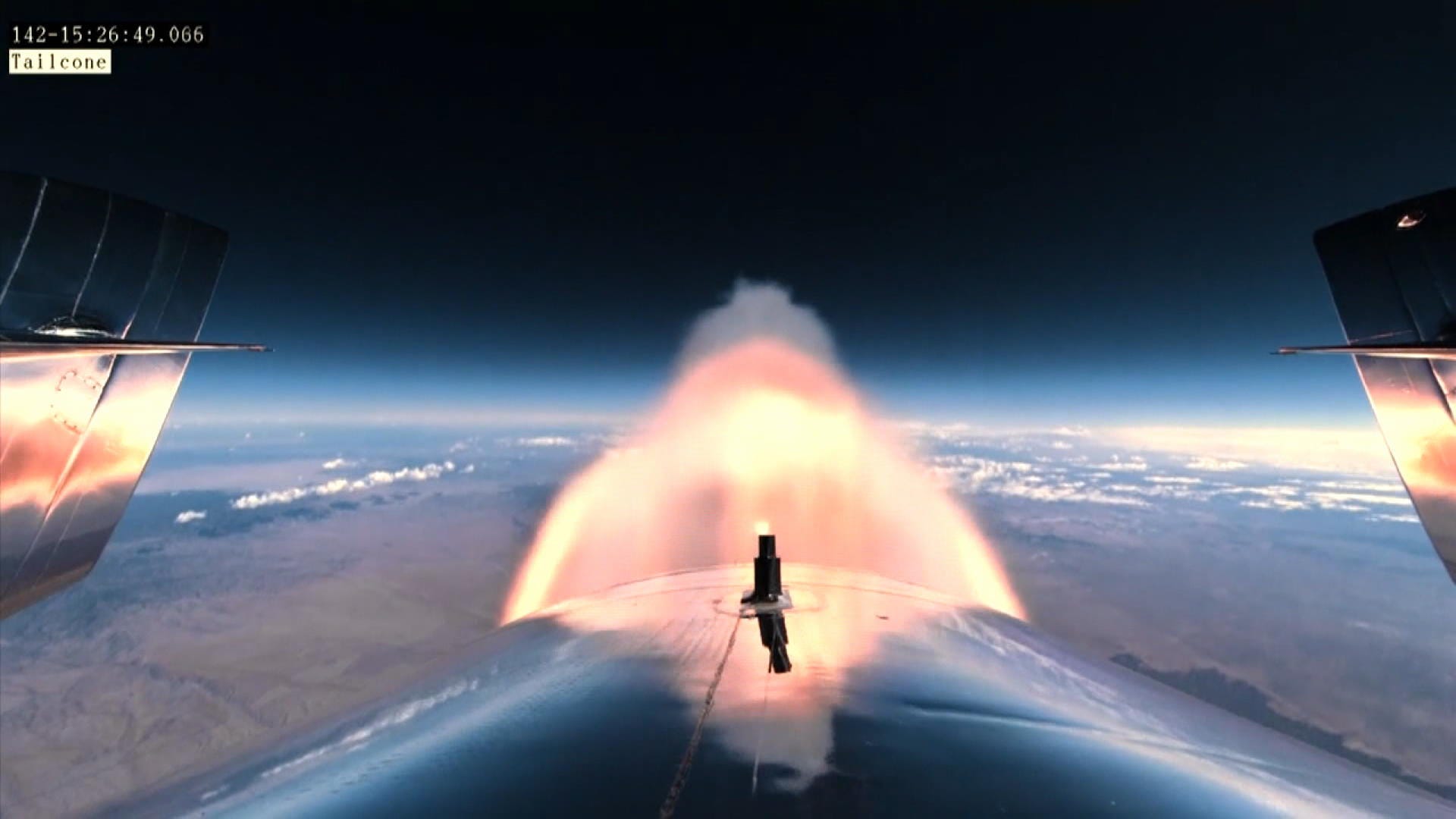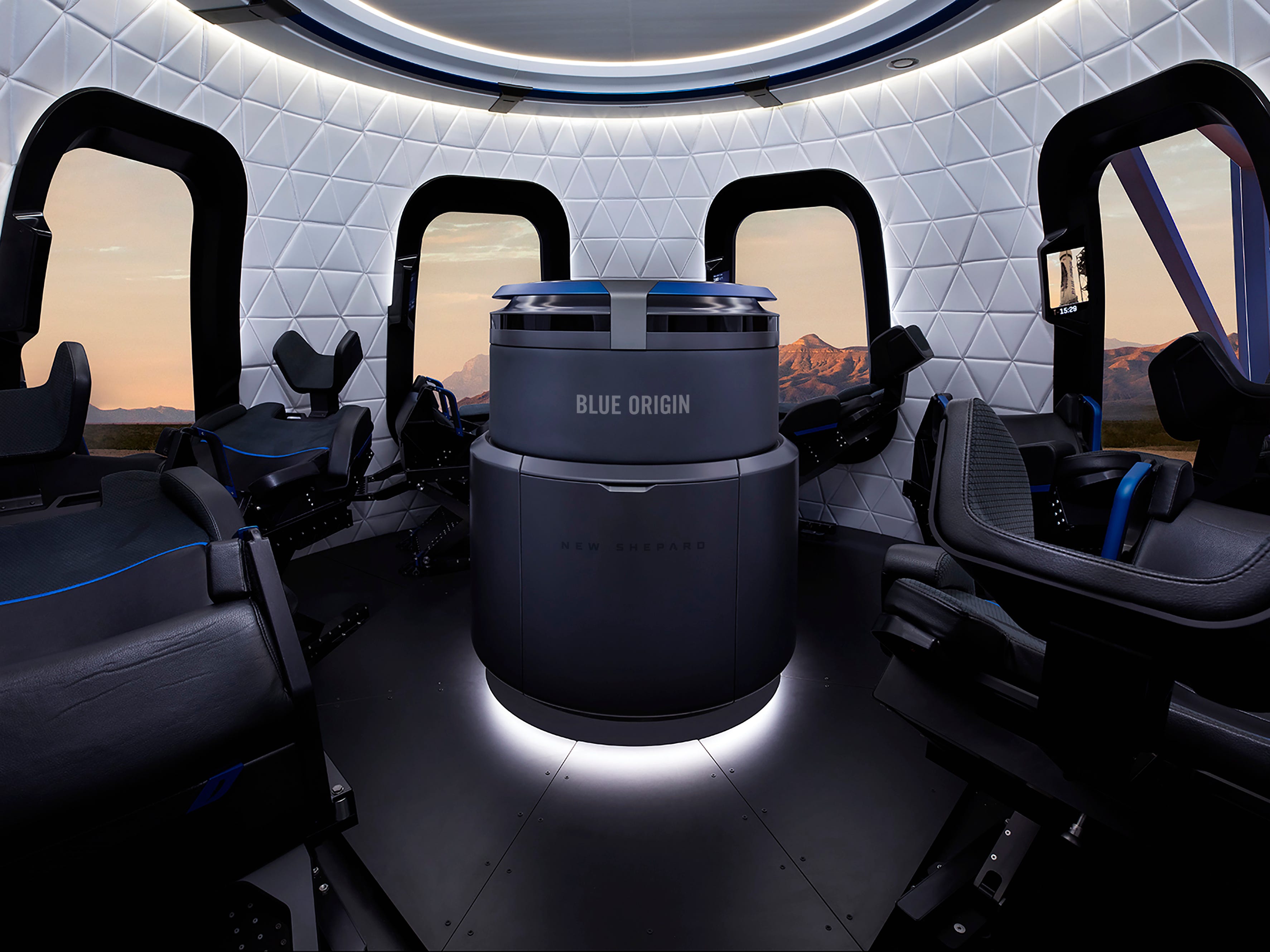Richard Branson is set to launch into space this weekend. Here's what to know.

Welcome to the space race, billionaire edition. Richard Branson, the founder of Virgin Galactic, is set to launch into space on Sunday, weather and technical checks permitting.
If the mission is successful, Branson will beat competitor Jeff Bezos, who recently stepped down as CEO of Amazon, by days. Bezos' own rocket company, Blue Origin, plans to fly him to space on July 20.
Branson will launch from Sierra County in New Mexico and Bezos from a desert location north of Van Horn, Texas, which is over 100 miles east of El Paso.
Here's what we know about both space flights and the possible implications for commercial space travel.
How to watch Branson's space flight
A live stream of VSS Unity's flight is scheduled to begin at 9 a.m. ET Sunday. It will be broadcast on Virgin Galactic's website and social media platforms. The Las Cruces Sun-News, part of the USA TODAY Network, will also carry the stream online.
Branson flying VSS Unity plane, Bezos launching in New Shepard rocket
The two launches into space will take place in very different spacecrafts. Branson will fly Virgin Galactic's VSS Unity, a spaceplane that will launch from the air after being carried to a high altitude by the aircraft VMS Eve.
From there, the Unity will use rocket power to fly to the boundary of space. Branson will be part of a crew of six, consisting of two pilots and four mission specialists.
Bezos, meanwhile, will visit space in a capsule on a rocket.
When Blue Origin's New Shepard launches from West Texas, the crew capsule will split from the rocket just three minutes after liftoff. One minute later, those aboard will reach apogee — the flight point farthest from Earth.
In-flight, the capsule will travel past the Kármán line, a 62-mile-high boundary between Earth's atmosphere and outer space in a flight.
That's a higher apogee than what Virgin Galactic has reached to date. On its May 22 test slight, pilots Dave Mackay and C.J. Sturckow reached an altitude of 55.45 miles.
This means that even if Branson flies first, Bezos could still claim to have reached the higher boundary. The federal space agency NASA considers the boundary of space to be 50 miles above sea level, while internationally many agencies use the Kármán line as the boundary.
After reaching apogee, the pilotless Blue Origin capsule will return to Earth with its passengers, landing by parachute near the launch site. The rocket is designed to land itself as well.
Aboard will be Bezos, his brother Mark, Bezos' honored guest Wally Funk and a yet-to-be-named passenger who won a bid to pay $29.7 million for a ticket in a charity auction in June.
Proceeds from the high bid of $4.8 million will go to the Club for the Future, a company-sponsored foundation that promotes science, technology, engineering and math.
How long will Bezos and Branson be in space?
Neither the VSS Unity or New Shepard capsule can achieve the speeds required for orbital flight, and instead they aim for suborbital flights offering passengers a brief opportunity to view the Earth from above and experience zero gravity.
After launching from its carrier plane, the Unity soars to the boundary of space. At its May 22 test flight it reached a velocity of March 3, or three times the speed of sound. Passengers will experience about 4 minutes of weightlessness before gliding back down to the ground.
From launch to landing, Bezos' flight will reach space in approximately four minutes. Once there, passengers and crew can unbuckle themselves to experience weightlessness for about three minutes before returning back to their home planet.
Why is Branson going to space? A child's phone call helped launch Virgin Galactic.

Have Blue Origin or Virgin Galactic run test flights on spacecraft?
Since Bezos began Blue Origin in 2000 and Branson launched Virgin Galactic in 2004, both companies have had their share of success and operational hazards.
Both companies have created new technology to push the development of space vehicles like the ones both individuals will fly in. But it hasn't all been smooth sailing.
In 2014, an earlier prototype of Virgin Galactic's rocket plane, the VSS Enterprise, crashed during a test flight over California's Mojave Desert, killing one pilot and seriously injuring another.
A recent book by New Yorker magazine journalist Nicholas Schmidle revealed that a subsequent test flight in 2019 experienced a potentially fatal safety hazard, when a seal securing a stabilizer on the plane's wing came undone.
Last December, a test flight was safely aborted after an onboard computer lost contact with a rocket motor.
The company's third successful crewed flight took place May 22, launching for the first time from southern New Mexico's Spaceport America, the base of Virgin Galactic's flight operations.
New Shepard, meanwhile, has flown 15 successful test flights, with the exception of a booster that crashed during a 2015 test.
None of its previous tests have included passengers.
How soon before non-billionaires can afford to go to space?
Virgin Galactic has said Branson's flight will be "testing the private astronaut experience." The company plans to resume ticket sales for a 90-minute ride soon after Branson's flight. Approximately 600 reservation have been made for prices peaking at $250,000. Blue Origin was previously reported to be looking at charging $200,000.
Virgin Galactic hopes to launch full-revenue commercial flights in 2022.
"Neither of us are going to be able to build enough spaceships to satisfy the demand," Branson told Reuters.
Branson has also said he doesn't expect prices to drop for another decade, and even by then, those looking for a ticket to ride could pay up to $40,000.
The business model is not limited to expensive joy rides, however. Virgin has entered contracts with NASA and other agencies to fly research payloads as well as Italian Air Force personnel training to be astronauts. Virgin is also involved in research and development for supersonic air travel on Earth.
Money: Companies to watch as a new more business-focused Space Age emerges




Comments
Post a Comment